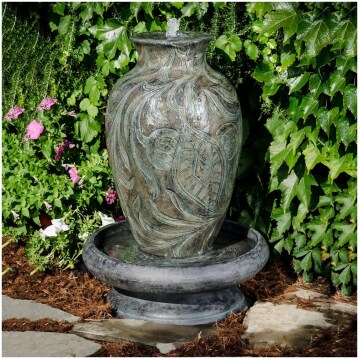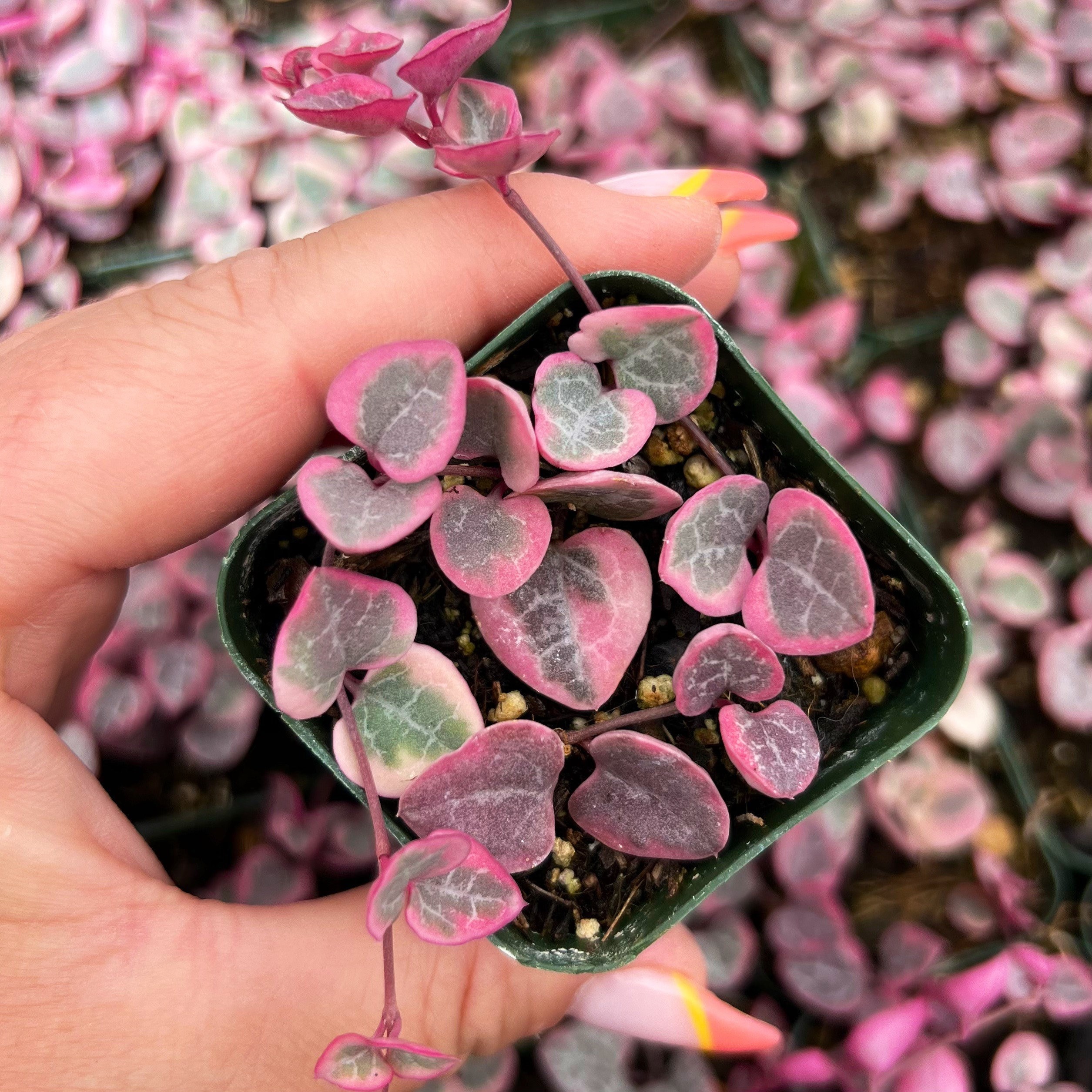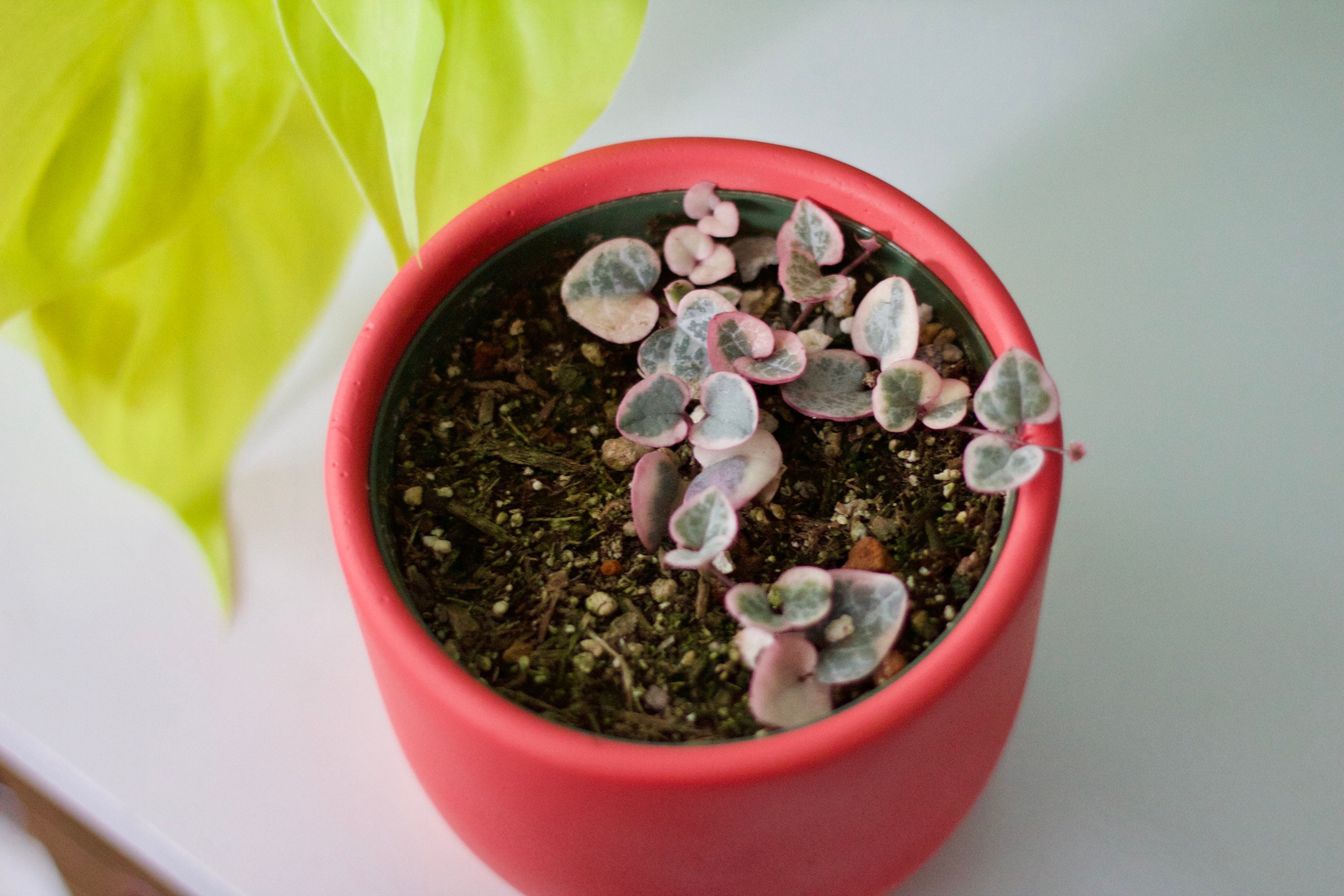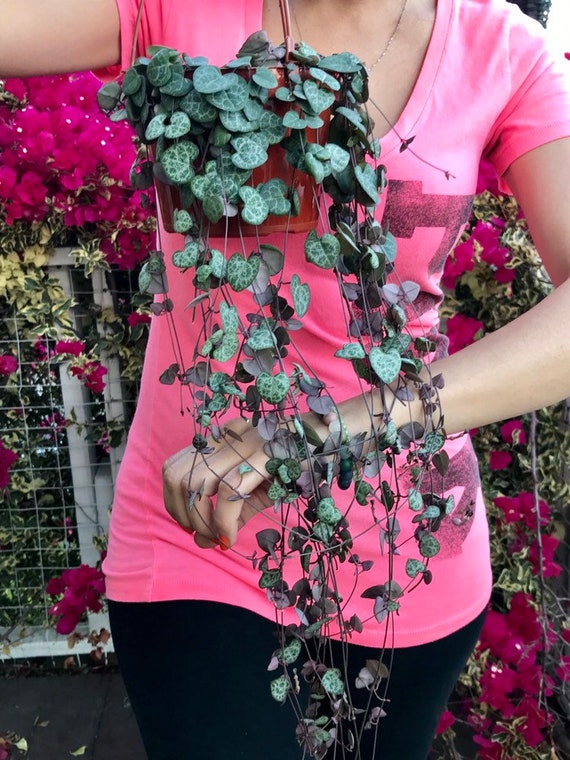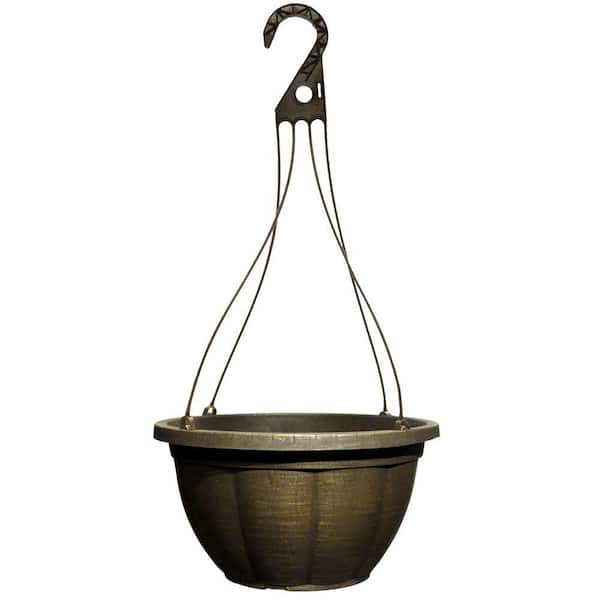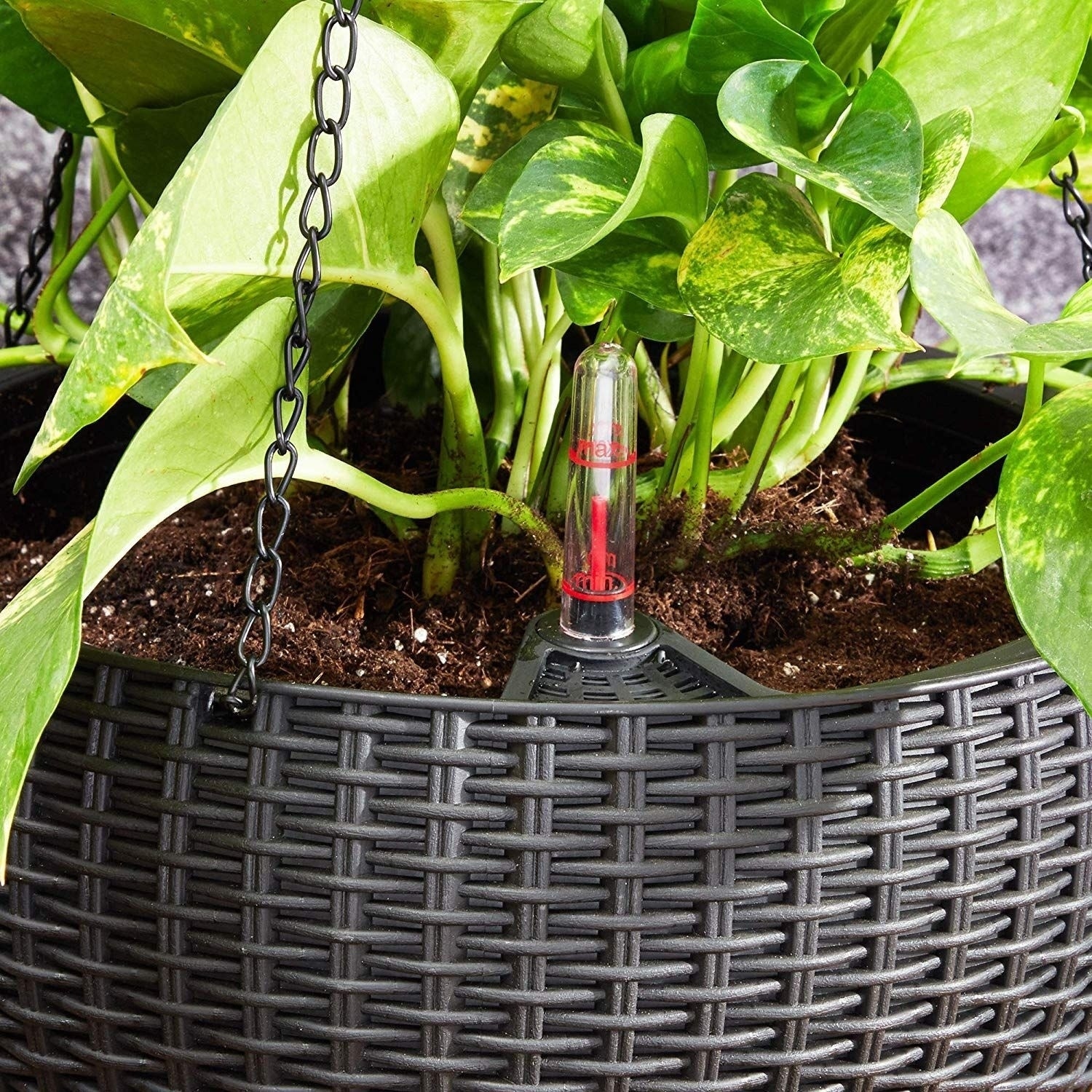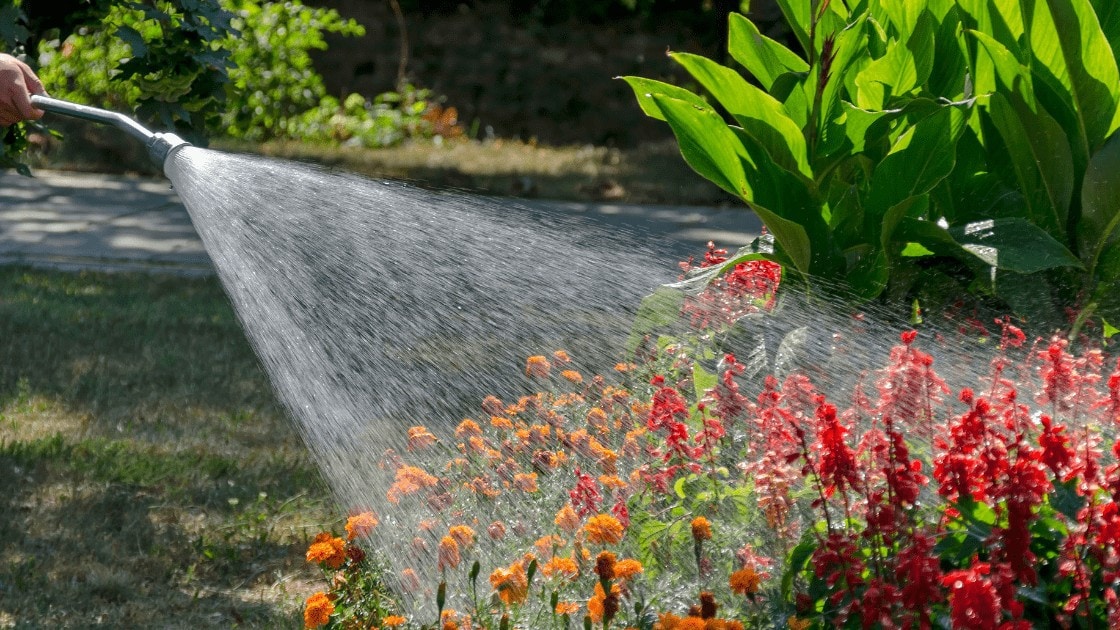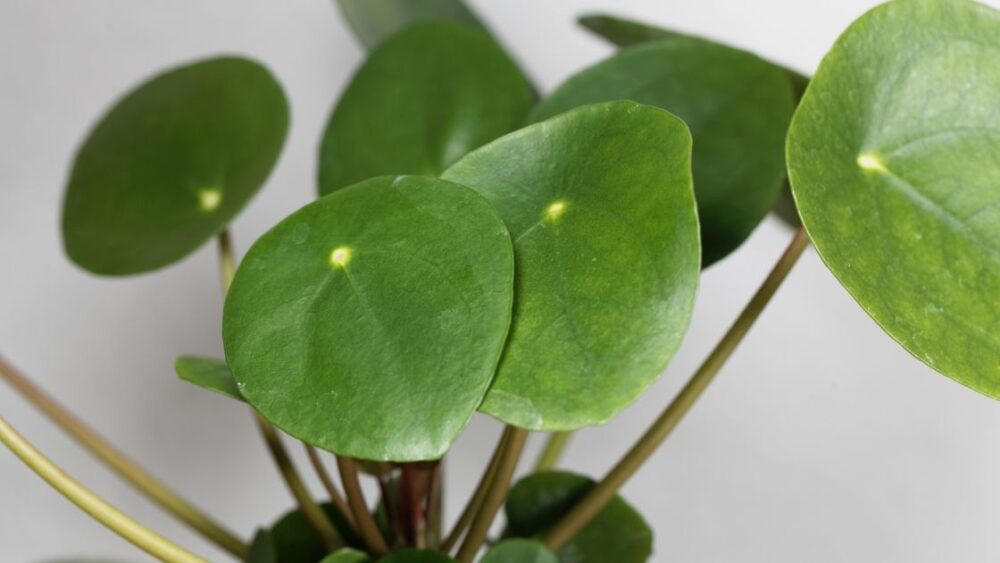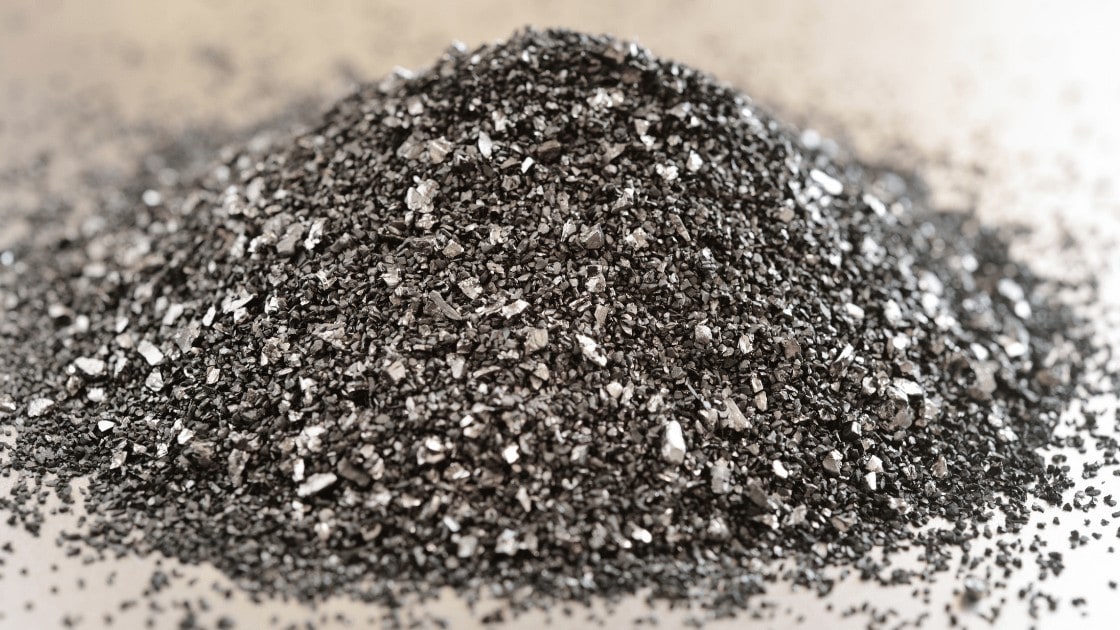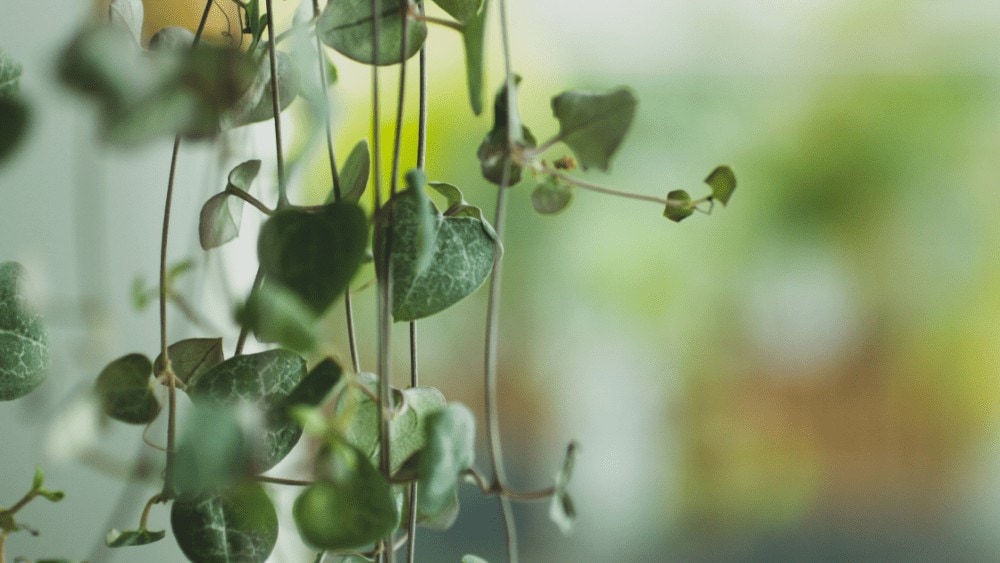
If the leaves of your String of Hearts start wrinkling, curling or losing their plump shape, this usually means that the plant is stressed by too much heat or simply needs more water. However, if the problem steadily worsens and doesn’t disappear when the plant is placed in a cool location, this may mean that the roots are affected.
The String of Hearts (Ceropegia Woodii) is a very unique-looking African succulent that is usually grown indoors in hanging pots. It’s a bit different compared to most other succulents – it doesn’t do well in direct sunlight and has an interesting, vine-like structure with thin stems and numerous leaves. For that reason, it’s often considered a ‘succulent-like’ plant and not an actual succulent.
What Can Cause Wrinkled Leaves in The String Of Hearts Succulent and How to Fix The Problem?
This plant is almost always grown indoors and can be difficult to acclimatize to direct sunlight. If suddenly exposed to the heat of the direct sun without gradual acclimatization, it can quickly die of dehydration. Because the plant usually hangs from hanging pots, there is no obvious wilting, which would otherwise be the first warning sign of heat stress. If you have a string of dolphins and have problems with those, check out this article, Why Is My String Of Dolphins Shriveling and Dying? Here’s Why
Browse our Affiliate Products
In many cases, the succulent may need to be cut back a bit and given a few weeks to recover and regrow new roots. In severe cases, repotting may be necessary. Let’s take a closer look at the few possible causes of leaf wrinkling:
Heat Stress

This is the first cause to consider and is the easiest one to fix. If the wrinkling and curling of the leaves starts soon after the plant is placed in direct sunlight, this is a clear indicator that gradual acclimatization is required. The String of Hearts is much more vulnerable to heat stress compared to other succulents and can die in a matter of hours if suddenly stressed by excess heat.
Drainage Problems

If your String of Hearts appears dehydrated, but watering more doesn’t fully fix the problem and instead causes the bottom leaves to start turning yellow, this usually signals too much water retention in the soil, leading to lack of oxygen in the roots.
The solution: is to repot the plant in a fresh cactus potting mix – otherwise, the problem may progresses to root rot.
For more information on potting soils, check out this article, What Are The BEST Potting Soils for Every Type of Plant?
Improper Humidity & Ventilation

Placing your String of Hearts plant near an air conditioner or a fan can cause too much water loss from the leaves, leading to temporary wrinkling. Convection heaters are even worse, because the air current they create can be very hot and dry.
Although this succulent-like plant does well in low humidity, that’s the case only if there are no significant air currents. If the wrinkling/curling of the leaves resolves quickly with some misting, this can be a good sign that the leaves are evaporating too much water due to a low humidity environment.
Root Rot

Root rot is usually a long-term problem that slowly worsens as the roots are starved oxygen. This can be caused by watering too frequently or by a suffocating, poorly-draining soil. The first signs are yellowing leaves at the bottom and curling/wrinkly leaves at the top of the stems.
Because root rot can physically destroy a large portion of root tissue, the problem can be difficult to deal with and the only solution may be to cut back the plant in order to temporarily reduce the aerial mass while new roots develop. The good news is that the cut branches can be easily rooted in water and give life to a new plant.
To find a wide variety of succulents, Check out our affiliates below.
Lack of Light
Although this plant dislikes the direct sun, it still has minimum light intensity requirements, below which it won’t have enough energy to pump water to its leaves effectively. The problem usually starts with loss of color in the leaves, followed by them falling off or wrinkling.
The problem usually fixes itself within days of the plant being exposed to more light. If you’ve ruled out heat stress as the cause of the problem, you may try hanging the pot outdoors in partial shade for a few hours and observe the changes that happen.
Forcing The Plant to Grow Upwards
Ceropegia is a downward-growing plant and if forced to grow upwards, it may start experiencing some problems, including leaf wrinkling. It has thin stems that don’t have a huge water-supplying capacity and carrying water upwards requires even more energy.
Other Reasons
Sometimes, the problem may remain a mystery and may be caused by watering with excessively hard water or by a disease. Often, the issue is caused by a combination of compounding factors and not just one. For example, if the soil is compacted and not well-draining enough, the plant will be much more sensitive to overwatering and heat stress.
What Other Issues Are Common In The String Of Hearts Succulent?
This succulent isn’t prone to any unique problems or diseases. Just like all other succulents it can become infested by Mealybugs or Aphids – this problem can be fixed by soap water sprays or manual removal of the bugs with cotton swabs. The most important thing is to make sure that the basic growing conditions of the plant are met well and it isn’t being overwatered, underwatered or suddenly exposed to too much heat.
Optimal Growing Conditions & Care Tips
Compared to typical succulents, this succulent-like vine has slightly higher water requirements and doesn’t tolerate high heat as well. It experiences winter dormancy, during which it requires much less water. Let’s take a closer look at the individual growth requirements:
How Much Sunlight is Required?
Small plants can be quickly acclimatized to the direct sun, but larger ones can be more tricky to acclimatize and are best kept indoors or in a partial shade. The plant has minimum light requirements, which are usually met well by placing it near a bright window.
It responds to higher light intensity by growing faster and developing more bright colors on its leaves. Young, small plants can be easily placed under a small LED light. Larger plants can be very long and using artificial lighting won’t be practical – they are best kept near a bright window.
What Temperature is Best for Growth?
The ambient temperature isn’t of great importance to this plant. Just make sure that the temperature is above 60F (15C) or the plant will go into winter dormancy. The plant can deal with temperatures into the 80s, but should not be suddenly exposed to much higher temperature than its used to. Higher humidity will increase the tolerance of this plant to higher temperatures.
Winter Dormancy Requirements
The String of Hearts experiences a typical winter dormancy. It’s easy to tell when the plant has gone dormant, because it will stop growing almost completely. Watering excessively during this period is one of the easiest ways to kill the plant or cause severe root rot.
Soil & Fertilization
This plant has no special soil requirements. Cactus potting mixes work well. Some growers like to add some coco coir to their mix to provide a bit higher water retention, without compromising the aeration, but this is completely optional.
When it comes to fertilization, the plant should again be treated just like any other succulent and provided with a monthly ‘dose’ of a diluted cactus fertilizer. Skipping fertilization with plants that have been growing in the same soil for years will greatly hinder growth but it won’t usually kill the plant.
Ideal Watering Frequency
The String of Hearts likes to experience some drought in-between each watering. However, it’s a succulent that is somewhat sensitive to drought, so be on the look out for any signs of leaf dehydration.
As soon as the leaves start losing their plumpness, water again, unless the soil is already wet. Large plants acclimatized to the outdoors may require watering as much as a few times per week, but for indoor plants, a good watering frequency is around twice per month.
Does It Grow Better Indoors or Outdoors

The plant doesn’t tolerate temperature below freezing. It can survive outdoors in USDA zone above 10, but it’s still best to keep it in a hanging pot and move it indoors during the winter. This is not a plant that is typically planted directly outdoors, unless you live in a very warm zone and have a suitable rock-garden.
What Should You Do if Your String of Hearts Appears to be Dying?
Look at all the basic growth requirements we outlined above and see if you’ve met them well. This is a very long-living plant (it can live for more than 20 years), so if it starts dying, this is almost always due to unsuitable growing conditions.
If the cause of the problem can’t be pinpointed, a good ‘blanket solution’ is to simply repot the plant in new cactus soil and move it to a brighter spot. This plant can be easily propagated via stem cuttings, which is always a good way to ‘revive’ a dying plant, even if it appears to have a severe disease.
Compensating for Unfavorable Growing Conditions
Unlike many other succulents, this one can survive surprisingly well in relatively low-light areas. However, it will still grow best near the brightest window you can find. During the winter, it doesn’t require much light or water and will not grow quickly regardless.
The unfavorable conditions with which the plant won’t be able to deal with are poorly draining soil and frequent overwatering. It tolerates a wide range of temperatures very well.
Different String of Hearts Varieties & Their Specific Requirements
There are only two String of Hearts varieties – the ‘normal’ variety and a variegated one, which has white lines on the periphery of the leaves. Both of them have identical care requirements.
Final Thoughts
The String of Hearts succulent is very easy to care for, but there is a slight learning curve in learning how to water it properly. This is due to its long, thin stems and high surface-area leaves that lose a lot of water. Under-watering and heat stress can cause curling and wrinkling of the leaves, but overwatering can eventually lead to root rot and paradoxically, to the same symptoms as underwatering.
A proper, well-draining soil that contains some coco coir will make the plant much more resilient and less sensitive to the watering frequency.


